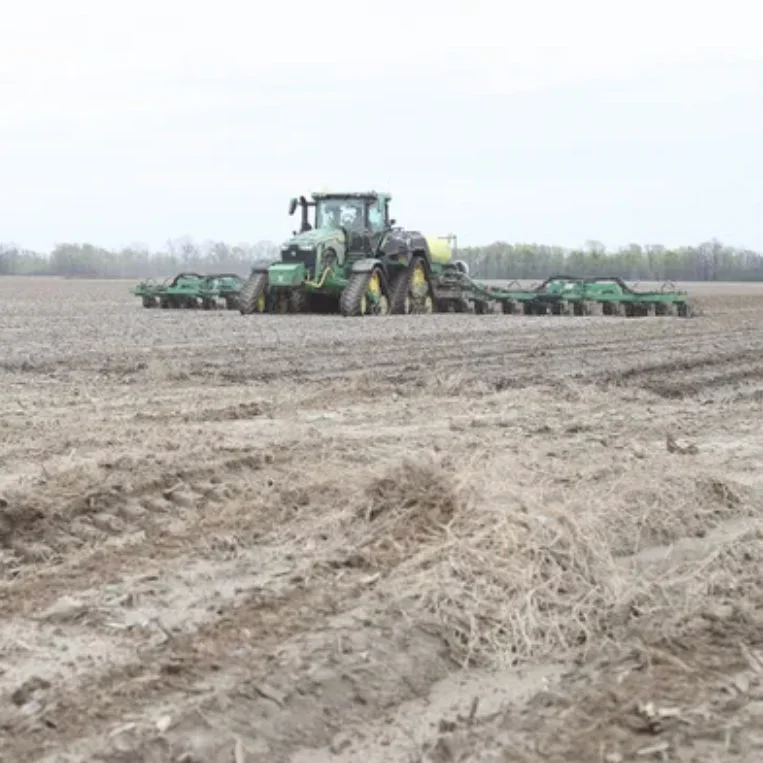Louisiana agriculture generates approximately $3 billion in sales each year, but in most years agricultural productivity is negatively affected by hurricane damage. Louisianans are familiar with the devastation and loss of life and property that can accompany a hurricane event as the state experiences, on average, one hurricane every three years. The total economic losses from a single hurricane can reach tens of billions of dollars, while agricultural losses can exceed one billion dollars. Louisiana is a major agricultural producer for the United States, but the structures, livestock, and crops are highly exposed to extreme wind and flooding during hurricane events.
Read MoreIn the 11 coastal parishes we consult in, lack of rainfall has not been a problem. Many areas have already exceeded the mean annual rainfall accumulation, and it’s not even August. We have already in some areas received in excess of 65 inches, so we are certainly experiencing the opposite of what we dealt with last year.
Read MorePinnacle Asset Management, L.P., a New York-based alternative asset management firm focused on global commodities markets, today announced that its portfolio company Viserion Grain, LLC, a subsidiary of global agricultural merchant Viserion International Holdco, LLC, has acquired four grain elevator assets from Greenfield Grain, LLC. The assets are located in Parkdale, Arkansas, and Dunn, Crowville, and Lake Providence, Louisiana. Terms of the transaction were not disclosed.
Read MoreThe ongoing dispute with Mexico over genetically engineered corn has been a significant issue for some time.
U.S. Trade Representative Ambassador Doug McKalip reaffirmed the U.S. commitment to resolving the issue, expecting a decision this fall. The dispute began after Mexico’s plan to block genetically engineered corn imports triggered concerns among U.S. corn growers. McKalip emphasized the broader impact on ag trade saying, “We cannot allow trading partners to play loose with the science.”
Read MoreCrop damage caused from bears in Franklin Parish was minimal.
This was the assessment given by Johnny Berry, large carnivore biologist for Louisiana Department of Wildlife and Fisheries (LDWF) to Police Jury members at their regular monthly meeting held on Thursday, July 11.
The number one crop, according to Berry, that suffers bear damage is corn with wheat being second most damaged crop in Louisiana.
Read MoreThe 2024/25 U.S. corn outlook indicates larger supplies, greater domestic use and exports, and slightly lower ending stocks. Beginning stocks for corn were lowered 145 million bushels largely upon greater use forecasted for 2023/24. Exports were raised by 75 million bushels based on current outstanding sales and shipments to date. Feed and residual use is up 75 million bushels based on indicated disappearance in the Grain Stocks report for June.
Read MoreThe National Corn Growers Association, joined by five other commodity groups, sent a letter to Department of Commerce Secretary Gina Raimondo asking her to consider the impacts on farmers as she reviews a petition by the agricultural chemical company Corteva that would place duties on imports of the herbicide 2,4-D.
“Restricting imports of 2,4-D will have wide-ranging consequences for farmers,” the letter said. “American farmers cannot solely rely on Corteva, which is the only domestic supplier of 2,4-D, because there is not enough supply to meet demand.”
Read MoreThe USDA recently released its annual Acreage Report which provides markets a more accurate idea of spring planting progress and what potential supply implications may be in store for the 2024 crop year. On the demand side, USDA also released its Quarterly Grain Stocks report which shows usage rates between March 1, 2024 and June 1, 2024. These changes in supply levels will impact 2023/24 ending stocks and 2024/25 beginning stock levels which will subsequently be reflected in the July World Agricultural Supply and Demand Estimates report.
Read MoreOn Friday June 28th the USDA released its annual Acreage report. The report estimates planted acreage of principal crops based on producer surveys conducted in the first two weeks of June. Nationally, principal acres planted were estimated at 315.177 million acres, up 1.866 million acres compared to the March Prospective Plantings report and 4.424 million acres lower than last year (Table 1). Southern states accounted for 22.8% of principal crop acreage.
Southern states account for 75% of rice production nationally, with Arkansas the largest producer. Rice acres planted were unchanged in Texas and Mississippi, declined 30,000 acres in Arkansas and increased 30,000 acres in Louisiana.
Read MoreThe 2024/25 U.S. corn outlook is unchanged relative to last month. The season average price received by producers remains at $4.40 per bushel. USDA will release its Acreage report on June 28, which will provide survey-based indications of planted and harvested area.
The 2024/25 outlook for U.S. soybeans includes higher beginning and ending stocks. Higher beginning stocks reflect reduced crush for 2023/24, down 10 million bushels on lower soybean meal domestic use that is partly offset by higher exports.
Read MoreCommon rust has been reported in some fields in central Louisiana and on the Dean Lee Research and Extension Center. However, this disease has not been a major concern in previous years.
Common rust may be the first disease found in corn fields and usually occurs in the lower-to-mid-canopy. Disease development is favored when temperatures are cool (60-77oF) and leaf wetness of 4-6 hours.
Read MoreThe 2024/25 U.S. corn outlook is for larger supplies, greater domestic use and exports, and higher ending stocks. The corn crop is projected at 14.9 billion bushels, 3 percent down from last year’s record as increases in yield helped partially offset decreased area. The yield projection of 181.0 bushels per acre is based on a weather-adjusted trend assuming normal planting progress and summer growing season weather, estimated using the 1988-2023 period.
Read MorePublic and private cost-share programs give farmers the option to test new technology and conservation practices with lower financial risk before footing the bill of whole-scale implementation.
For the Wiggers Farm Partnership in Winnsboro, La., utilizing cost-share programs available through NRCS, especially the Conservation Stewardship Program, has enabled them to make compounding changes to irrigation equipment, soil improvements and more.
Read MoreGenerational farms in the Mississippi Delta are imbibed with a special blend of history, camaraderie and commitment to quality. Visiting places where the roads share the family surname and corners carry on the legacy of tenant growers long gone puts into perspective the heritage of growing in some of America’s richest soils.
At the Wiggers Farm partnership near Winnsboro, La., next-generation producer Drew Wiggers, alongside his uncle Scott and cousin Rusty, contributes to the slow, steady progress of on-farm improvements that hallmark modern agriculture.
Read MoreRain is a good thing – though farmers are constantly facing the challenging reality of too much or not enough of one of their occupation’s most critical resources. In Louisiana, where corn planting typically kicks off in late February, rebounding rains after 2023’s widespread drought have stalled progress planting 2024 corn.
In USDA crop progress reports released March 11, 18 and 25, each found the state averaging just over two days per week suitable for field work – based on soil moisture and temperature. By March 25, corn planting completion hovered around 52%, a sharp difference from 2023’s 93% and grand progress form the week prior at 28%.
Read More












